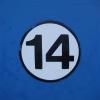Posted 25 June 2002 - 21:41
Maybe I can help, here's how I see it. The former Belgian-Prussian (Germany) border (or rather the Dutch-Prussian border, the Belgians came into the picture in 1830) established in 1815 did indeed run over the old circuit. In fact, the small stream of Eau Rouge was the border for some length until the stream flows under the circuit at the section everybody now knows as Eau Rouge. The steep hill now associated with that name up to La Raidillon did not exist and there was/is a far sharper corner with a gentler inclination to the left of the present circuit that carried the normal traffic out and into the valley. This bend was the Virage de l'Ancienne Douane.
Past the bridge, in the middle of the circuit, the border turned south, parallel with the circuit down to Les Combes. There the old circuit went east to Burnenville (which was Prussian) and the border continued south (the modern circuit crosses it about where the track goes downhill to Rivage). The old circuit then crosses the border after the section of Malm├ędy on the long straight towards M├ósta (which was Belgian). AFAIK there's nothing here that indicates this too was a border-crossing.
This is all assuming the modern municipal border is the same as the former national one, but since it is elsewhere, I would guess it applies to Malm├ędy as well. After WWI, at Versailles in 1919, it was decided that Belgian would annex the German land bordering it, with Malm├ędy (already French-speaking) and other German-speaking territory such as Eupen and Sankt-Vith. The first races in this area didn't start in earnest until the 1920s, so after the area had become fully Belgian, hence the "former customs".
So, to sum up:
Belgian: New S/F-line, La Source, Old S/F-line. Then the bridge as the border.
German: La Raidillon, Kemmel, Les Combes.
New circuit (in Belgium) : Rivage, Pouhon, Fagnes, New Stavelot.
Old circuit: Burnenville and Malm├ędy in Germany, then M├ósta, Old Stavelot, Cottage, etc. up to Blanchimont and back to the S/F-line in Belgium.

















